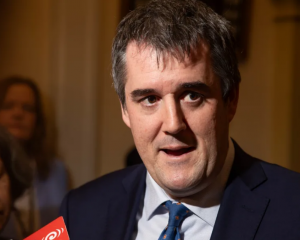
Building and Construction Minister Maurice Williamson is expected to head to Invercargill today after being asked to by Prime Minister John Key.
"This is actually a modern building that has collapsed under a very small amount of snow relevant to what the Building Code indicates it should be able to withstand," Mr Key said at his post-cabinet press conference yesterday.
"So something has gone seriously wrong there and I think we need to understand that a little bit better."
Demolition crews are looking to clear the remains of the 10-year-old stadium, as questions are raised about its strength.
It was revealed yesterday that the roof suffered sagging problems during construction.
Representatives from both the Invercargill City Council and the Southland Indoor Leisure Centre Charitable Trust, which owns the stadium, discussed the incident yesterday.
Trust chairman Acton Smith told the meeting that it had appointed local engineer Graham Cole to undertake a "thorough, independent structural engineering review" during the coming weeks to ascertain the cause of the roof collapse.
Invercargill Mayor Tim Shadbolt said it would take a while for Mr Cole to report back.
Mr Shadbolt said he had received support from several builders and engineers for comments he made to media, expressing concern about the initial construction of Southland Stadium.
He said rumours had been rife around the city for several years about the quality of the work.
Media reports from 12 years ago show plans for the stadium had to be revised to appease disgruntled neighbours, who were concerned about shading the height of the building would cause to their properties.
As a result, the roof was lowered 15m and the vertical shading angle reduced to below 20 degrees.
Then, during construction, there were problems with the roof when several of the huge steel trusses across the community courts -- the area where it collapsed at the weekend -- had sagged following installation.
At the time, trust chairman Ray Harper said the movement was slight -- less than 10cm in the worst case -- and was not unusual in such a large project. He said there were no safety concerns because the problem was not serious and it had been detected early.
"It will be perfect when the job is finished; it has to be to have certification, anyway."












